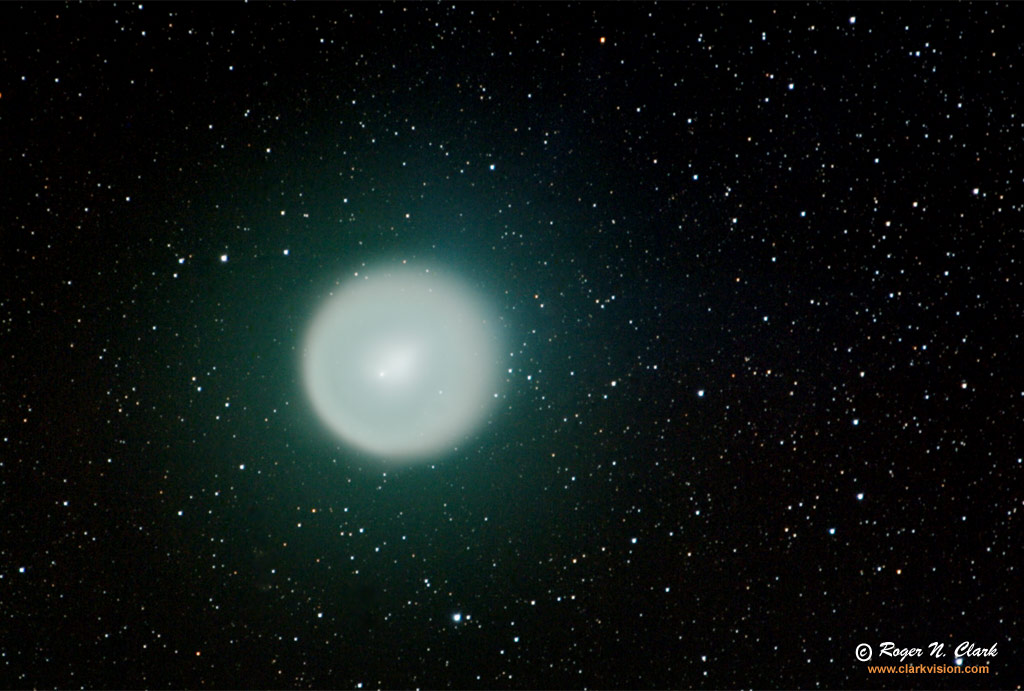| Home | Galleries | Articles | Reviews | Best Gear | New | About | Contact | Gallery Index | Previous |
Next |

| Home | Galleries | Articles | Reviews | Best Gear | New | About | Contact | Gallery Index | Previous |
Next |

Periodic comet Holmes underwent a 17-million fold increase in brightness in mid-October. It rapidly became visible to the unaided eye in light polluted cities. The cream color is due to dust, and the hints of green are due to carbon and cyanide.
Technical. Canon 1D Mark II digital camera with 500 mm f/4 L IS lens + 1.4x TC = 700mm at f/6.8, and IDAS light pollution filter. Imaging was from my home within the light pollution of the Denver metro area. The image is the sum of 14 2-minute exposures at ISO 800 tracked with a Losmandy G11 mount, and autoguided with an ST-4 autoguider. The 28 minutes of exposure were aligned on stars and stacked in ImagesPlus, and the comet moved with respect to the star background. The image was then stretched to show the faint outer envelope. A subset of 7 2-minute exposures (from the 14) were then processed and aligned on the brightest part of the comet (the central bright spot). The shorter total time resulted in no apparent movement between the comet and stars, so the central bright "ball" was masked and added to the 28-minute exposure as an overlay and the two blended together. The 7 2-minute exposures were stretched to best show detail in the bright portion of the comet. Processing of all images included dark frame subtraction and light fall-off correction, and the images aligned, and averaged using adaptive average in ImagesPlus. The image was then stretched in ImagesPlus using digital development and touched up with curves in Photoshop. No sharpening has been applied.
The Exposure Factors, CEF, CEFA are measures of the relative amounts of light received from a subject. It can be used to fairly compare wildly different lens/telescope apertures and exposure times. For this image:
Plate scale is 2.45 arc-seconds/pixel in the original, and 4.9 arc-seconds per pixel in this cropped and 50% reduced image.
On November 3, 2007, Comet Holmes was 1.621 AU from the Earth, and 2.475 AU from the sun. From the observed angular sizes, one can compute the physical sizes of the comet. The outer faint portion is about twice the diameter of the sun and the bright round ball in the image is a little larger than the diameter of our moon's orbit.
Please visit my Extensive Articles on Photography .
Keywords to this image = astrophoto-1 comet night low-light digital_astro
Image ID: comet.holmes.c11.03.2007.rnclark.alnstar.28m.f-1024.jpg
| Home | Galleries | Articles | Reviews | Best Gear | Science | New | About | Contact |
Last updated November 03, 2025